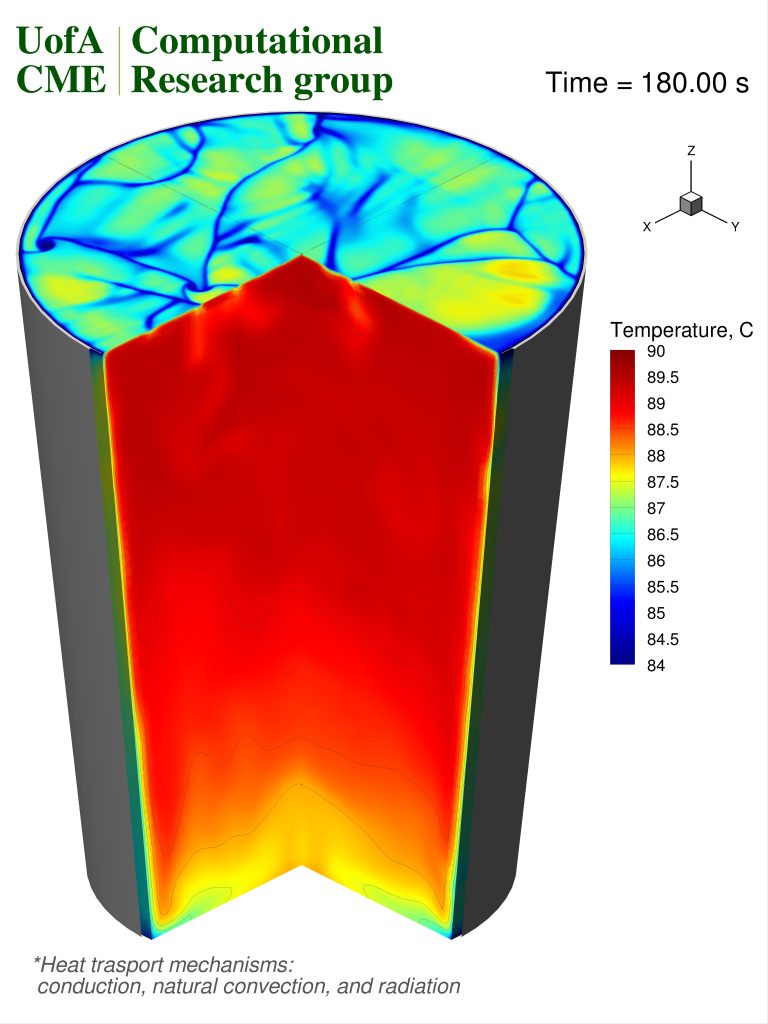Submission 2023
| Submitted by: | Chinmay Baliga |
| Department: | Chemical and Materials Engineering |
| Faculty: | Engineering |
| Collaborator: | Doston Shayunusov |
Tea or coffee is ~98% water. The cooling of hot water in a small cup is modelled using three-dimensional computational fluid dynamics. All pertinent heat transfer mechanisms, such as natural convection, radiation and evaporation, are considered.
Hot water is taken right off the kettle and poured into a cup. The temperature profile of the coffee is monitored versus time. A seemingly-trivial problem soon transitions into a chaotic, turbulent phenomenon. The gradients in temperature across different regions in the cup incite frenzied currents throughout. The top free surface of the diagram shows the presence of eddies (swirling of a fluid) arising out of turbulent kinetic energy dissipation. A segment of the cup is extruded to show the variation in temperature of the bulk of the water along the height of the cup. Surprisingly, the topmost layer of fluid is not the hottest.
Aided by experimental data, it is shown that it is vital to consider evaporative cooling for accurate determination of the transient drop in temperature of the tea in the cup.
A key takeaway of our research – always cover your cup with a lid for a significantly longer-lasting enjoyment of your favourite hot beverage.

